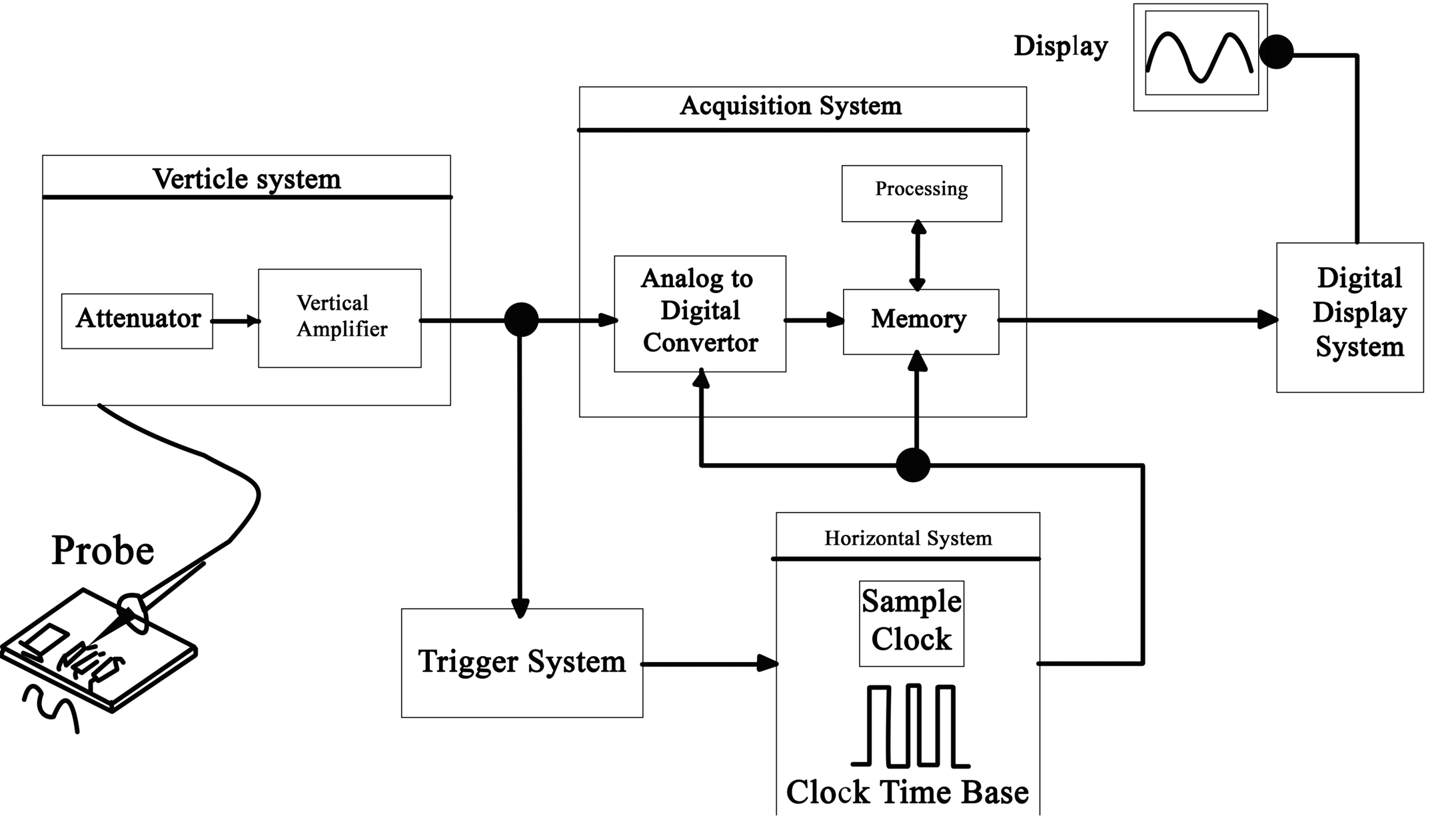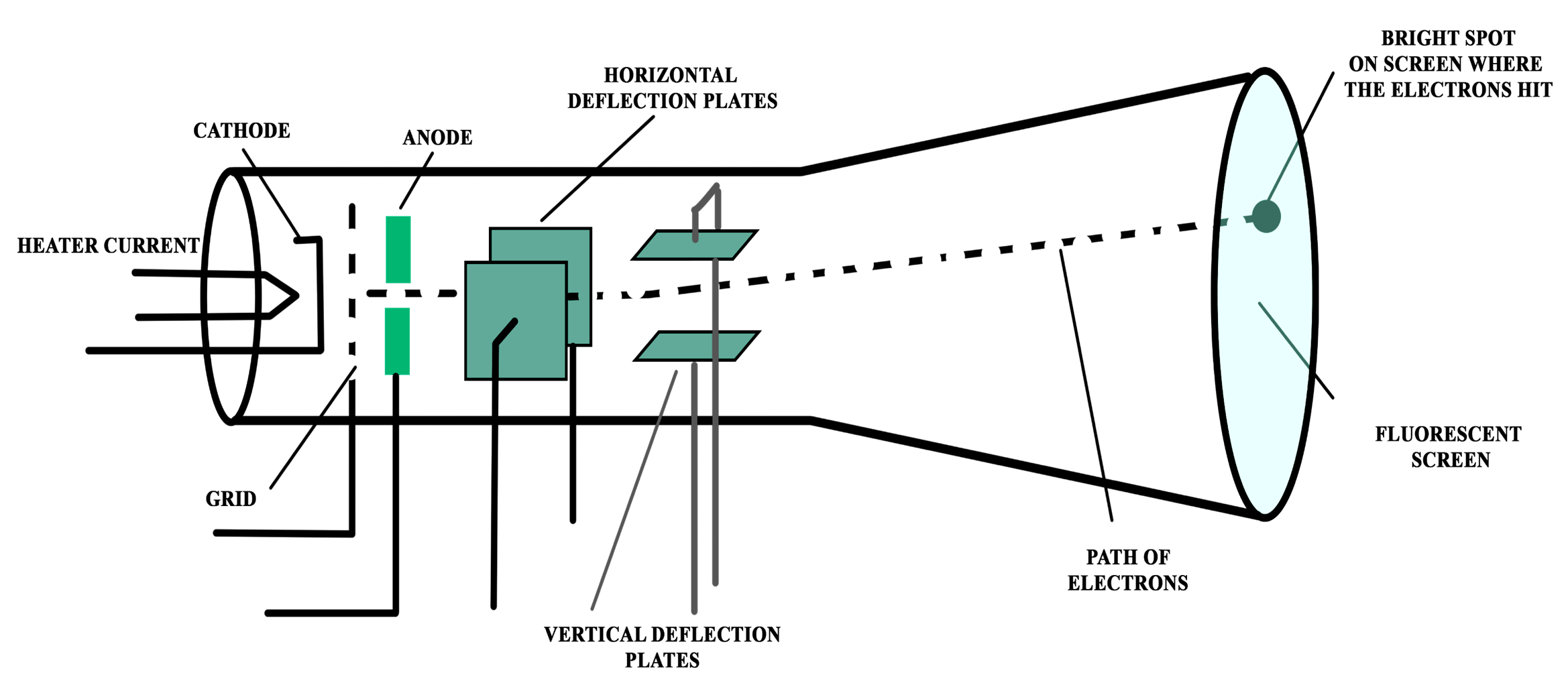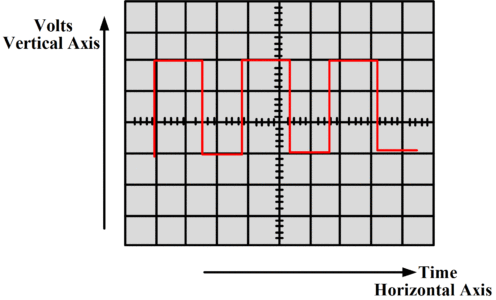“Oscilloscope is most widely used to display amplitude and period of the signal as well as the shape of the wave.”
Anything can be measured on the two-dimensional graph drawn by an oscilloscope. Normally, voltage is displayed on the vertical, or Y-axis and time on the horizontal, or X axis as shown in Fig.
This type of display presents for more information than do other test and measurement instruments such as multimeter and frequency meter. For example, with scope, you can determine the amplitude and shape of an AC signal, how much noise is present and the frequency of the signal. In addition to measuring electric signals, scopes measure nonelectrical phenomena when appropriate transducers are used. Transducers change one kind of energy into another. Microphones and loudspeakers are two familiar examples. In microphones, sound waves are converted to electric signals; loudspeakers convert electric signals to sound waves. There are many kinds of transducers.
With proper transducers, scopes provide very extensive test and measurement capabilities.
Oscilloscope Parts and Function
The basic control systems of an oscilloscope are shown in the following figure.
Fig: Basic Circuit of an Oscilloscope
Oscilloscope Vertical System
The vertical system controls the vertical axis of cathode-ray oscilloscope (CRT). Any time the electron beam, which draws the graph, moves up or down, it does so under the control of the vertical control circuit. This system is the Y-axis control. The horizontal system controls the left to right movement of the electron beam. This system is the X-axis control.
Oscilloscope Trigger Circuitry
The trigger circuitry determines the beginning of the horizontal sweep. It is responsible for creating stable CRT displays. A signal that is selected to do the triggering should be time-related to the displayed signal. The display system contains the CRT, which shows the signal that is being observed.
Oscilloscope CRT Control
The CRT control system includes those circuits that provide control for intensity (brightness), focusing of the electron beam for sharpness and vertical and horizontal positions. More expensive oscilloscopes also have controls for trace rotation, beam finding, and automatic intensity and focus.
Basic Operation of an Oscilloscope
The functional elements of a CRT (a vacuum tube device) are shown in the following figure.
Some of these elements such as the cathode, anode, and the control grid, serve the same functions that they serve in the conventional vacuum tube, even though they are constructed as cylinders.
Cathode of an Oscilloscope
The surface of the cathode is coated with special materials that permit it to boil off large quantities of electrons when it is raised to the correct temperature. The heater provides the energy to heat the cathode, and it gets its power from a low voltage, 60 Hz source, usually, a step-down power transformer winding. The cathode-grid voltage (relative to the cathode) determines the intensity of beam current and therefore the brightness of the displayed pattern. This system is referred to as Z-axis control. The flow of electrons is from the cathode to the positive potential of the anodes. High voltages are used for the last anode; the voltage depends on the size of CRT.
Vertical and Horizontal Deflection Plates
The electron beam must pass between two sets of deflection plates before reaching the CRT. Voltages applied to the vertical deflection plates cause the beam to move up and down according to the intensity of potentials applied to them. The output of the vertical control amplifier provides these voltages. Similarly, the beam is deflected from left to right across CRT from voltages applied to the horizontal deflection plates. These voltages are supplied by the horizontal control circuits. Because of the very small mass of the electrons in the beam, the voltages connected to the deflection plates can display events on the face of the CRT that represent time elements in nanoseconds.
Oscilloscope Fluorescent Screen
On the inside surface of the face of CRT is phosphor coating, which fluoresces when struck by the electron beam. The result is a glow seen through the glass for a very short time afterward, tracing the path of the beam. Various colors can be produced, depending on the chemical composition of the phosphor. Green phosphors are generally used because they are more efficient. The following figure shows the face of a typical CRT, The display is a square wave.
A TV picture tube is CRT. Though much larger screens are used with TV; these tubes possess the same basic elements as scopes, with one major difference. Picture tubes use magnetic deflections because of their larger size. Two sets of coils is used to provide horizontal and vertical deflection.



